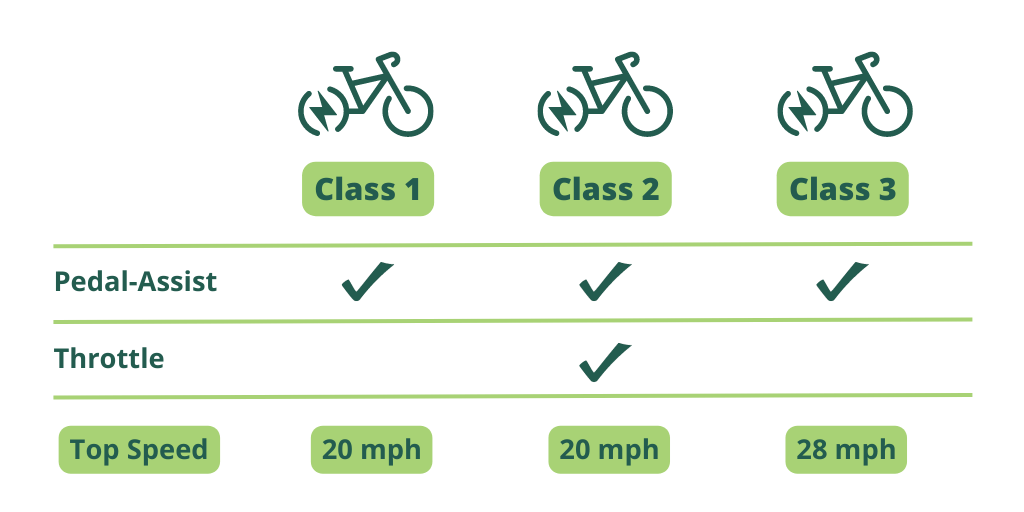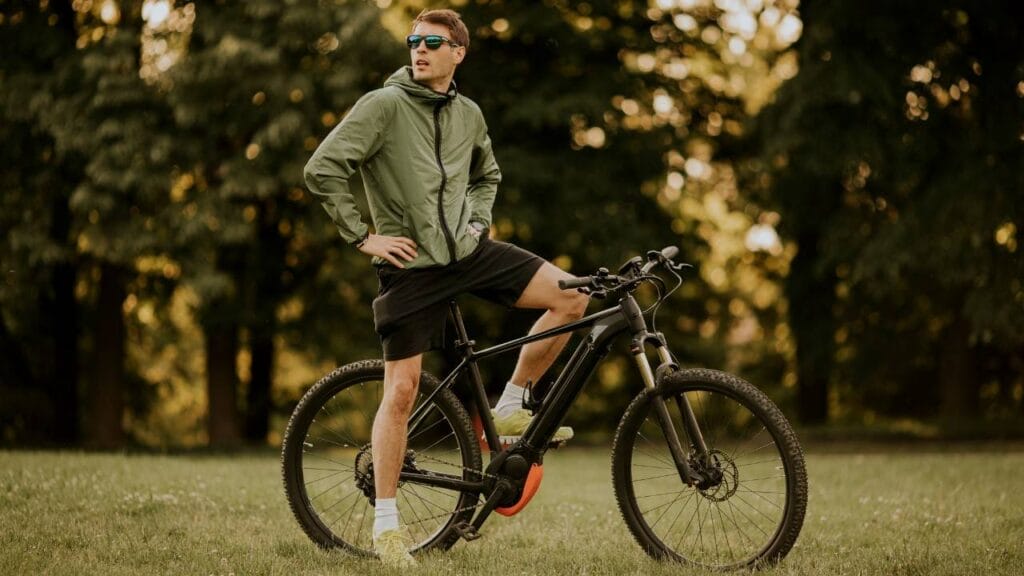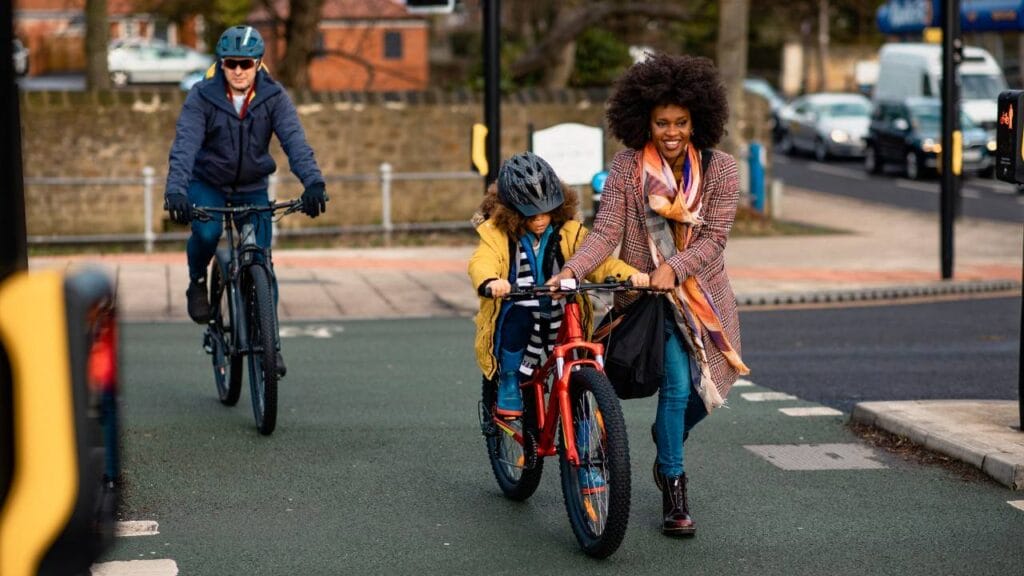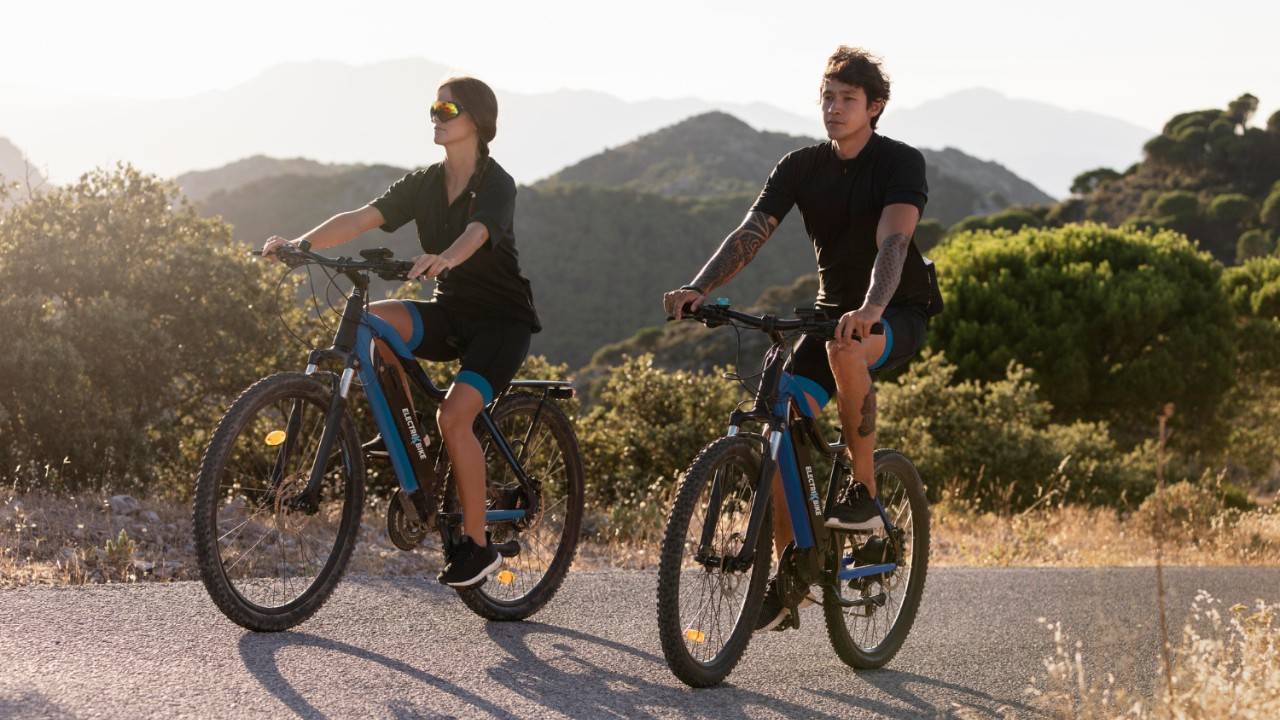Whether you’re looking for the fastest and most efficient way to get to work or are wondering whether that crazy neighbor is breaking speed limit laws, it’s important to understand what actually determines the maximum speed of an electric bike.
The Class 1 and 2 e-bikes have allowed top speed of 20 mph (32 km/h) and Class 3 e-bikes can go up to 28 mph (45 km/h) as per the laws in the US. Obviously, there are faster e-bikes that can go up to 70 mph (112 km/h) in the race track mode. But those are not allowed on roads.

You’ll also find variations between a typical e-bike and a scooter and a lot of that comes down to limitations in the motors and batteries.
Let’s take a closer look.
What Factors Determine the E-Bike Speed?
There are four main factors that determine the speed of an e-bike. Some are down to the laws of physics, while others are down to laws on speed limits.
1. Class
Most electric bikes fall into three categories, and then there are high-powered electric motorbikes that can travel at very high speeds, but they also require a driver’s license.
Electric bikes that people use for commuting and fun are significantly more limited.
A class 1 electric bike is one that has pedal assist only. What that means is that the motor will help you only while you’re pedaling and only up to a speed of 20 mph. Pedal assist is a very basic technology, and people find it helpful if they regularly cycle somewhere with steep inclines.
A class 2 electric bike will provide a combination of pedal assist and throttle with a top speed of about 20 mph. Similar to a class 1 bike, you’ll get some assistance when you’re pedaling. But you can also pull on the handlebar throttle to get an extra boost.
And then there’s the class 3 electric bike that offers pedal assist only but at speeds up to 28 mph. The motor power kicks in a bit more powerful as soon as you start pedaling and you’ll get up to max speed quite quickly compared to muscle power alone.
We have put together some of the best electric bikes that you might want to consider before buying a random one.
2. Laws
Every state has its own speed limit laws, and those apply slightly differently to electric bikes. While a general speed limit applies to all motor vehicles on public roads, there are additional rules for electric bikes.
In most cases, that speed limit is between 20 and 30 mph, but you will need to check your local state and municipal laws.
That basically means you can’t set your e-bike to some crazy race track mode and travel at the same speed as the cars around you.
3. Battery Type
I won’t get into the detailed physics of how battery performance and power are measured. But it’s important to know that the battery will also have an impact on the maximum power of an electric motor.
Electric cars and motorbikes have high-powered batteries to support them going at high speeds, but the batteries you find in electric bikes and scooters will limit the speed to about 30 mph.
4. Electric Motor Power
Just like with an internal combustion engine, an electric motor will have limited torque and horsepower. And considering that the motors, even on a fast electric bike, will be quite small, there is a significant limit on the speed.
You’d have to go for a motorbike with a large electric engine and a race track mode to get some great speeds and accelerations, and that’s not something you’ll find on e-bikes and scooters.
You can also buy an electric bike conversion kit that is a simple battery and motor assembly that you attach to your existing bike. But these will also have the same speed limit as regular e-bikes.

Why Are E-Bikes Limited To 28 mph?
The top speed of most electric bikes is between 20 and 30 mph, and this is generally set at the state level. And there are very important reasons why this maximum speed has been set.
1. Safety First
In 2002, the Consumer Product Safety Act passed regulations to ensure that an electric bike in pedal assist mode doesn’t go beyond 20 mph. Anything above that would make the electric bicycle a motor vehicle.
And going beyond that speed would pose a danger to the rider and other participants in road traffic.
2. Tackle Misuse
Illegal racing started to become a problem from day one of the electric bikes hitting the market. And to tackle this problem, maximum speeds were needed through regulations.
These speeds are high enough for people to get around fast and efficiently. But at the same time, they are low enough to discourage racing.
3. Reduce Speed Differences
Electric bike users are effectively on the same playing field as cyclists, and they also have to contend with other motorists. By bringing down their speed, it puts them on a level playing field with cyclists and prevents speeding in heavy traffic that can lead to accidents.
4. Create A Standard
By having the three different classifications for technology and speed, regulations have established an electric bike standard that makes it easier for consumers to compare. It also makes it easier for companies to compete in a fair way, as each company has to stick within the confines of certain rules.
5. Reduce Energy Consumption
Just like with internal combustion engines, the faster an electric bike goes, the more energy it will use. You won’t get too far traveling at high speed, and that will also mean that you use up significantly more energy.
For a typical commuter in a city getting around on an electric bicycle, it should all be about being more energy efficient than traveling at maximum speeds.


Read More:
How Fast Is The Fastest E-Bike?
While there are regulations and laws about the speeds e-bikes can travel, there are some that can go faster. However, these are typically used for competitive sports events that don’t take place on public roads.
First of all, these electric bikes go up to 20 mph in standard mode. But they have the option to turn on a race mode that is only allowed outside of public traffic. This mode allows some of these bikes to go over 70 mph, and that could be seriously dangerous when dealing with pedestrians and other motorists.
Example Top Speed E-Bikes
One of the fastest electric bikes I have seen is the Hi Power Cycles Revolution XX. It’s listed at a speed of over 70 mph in race mode, and you can also pedal along with it.
The second fastest electric bike seems to be the 12000W Enduro e-Bike which tops out at 62 mph. It actually looks a lot more like a dirt bike and has a very strong and durable bike frame.
The Delfast Top 3.0i also looks more like an electric motorbike and is shipped with a limit of 20 mph. But there is an off-road mode that will allow you to travel at up to 50 mph.
However, let me say that I wouldn’t recommend buying any of these unless you’re planning to compete in organized races. For everyday use, stick with the more basic electric bikes.

How Fast Do Electric Scooters Go?
Electric scooters tend not to go as fast as e-bikes and often have a top speed of about 15 mph. One of the most popular ones I have used is the TurboAnt X7 Pro which has a maximum speed of 15.5 mph.
This is mainly due to the fact the frames are smaller, and therefore there’s not as much space as on an electric bike to attach a larger motor and more batteries.
But similar to an electric bike, there are scooters where you can select a higher speed limit for driving on race tracks. I’ve seen some that go up to 60 mph, but I don’t think you want to be standing on a scooter at those kinds of speeds.
At least on an electric bike, you are securely seated, and you have much larger wheels to deal with uneven and bumpy surfaces. An electric bike will also be able to slow down a lot faster due to larger brakes.
Frequently Asked Questions (FAQ)
An e-bike can be up to 10 mph faster than a regular bike. This is based on the average person sustainably cycling at about 18 mph and an electric bike reaching up to 30 mph. Of course, it will ultimately depend on how fast you can cycle on a regular bike.
A 5000w electric bike will go about 50-60 mph. This will depend on the motor restrictions and limitations as well as the weight of the person riding the bike. Also, keep in mind that it’s not legal to go that fast in public.
Yes, electric bikes can go 30 mph. It’s typically class 3 bikes that will achieve this kind of speed consistently. Some electric bicycles will allow you to set higher speeds for going off-road and on race tracks.
A 1000-watt e-bike will have a top speed of about 30 mph. Even with no speed limit settings, these motors won’t achieve faster speeds due to the limited power output unless you can achieve higher speeds with pedal power alone.
Yes, powerful electric bikes can go 60 mph. There are some on the market that looks more like dirt bikes, and they have powerful motors that can achieve faster speeds for a short amount of time. In most cases, these speeds will drain the battery in a matter of a few minutes.
A 48-v e-bike will typically have a 1000-watt motor and provide speeds of up to 30 mph. This is ideal as it can save on battery usage and helps you stay within most legal limits set by states.
Conclusion
While it might seem like a great idea to focus on e-bikes with a higher speed and powerful motor for a higher maximum speed, you have to keep in mind that there is a legal limit, and going faster will drain your battery.
You won’t get anywhere near the maximum range of an e-bike or scooter if you don’t keep to speed restrictions.
Of course, you can significantly increase the range by relying less on pedal assistance, which will give you more of a workout on your commute as well.


